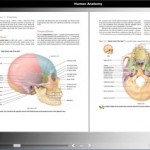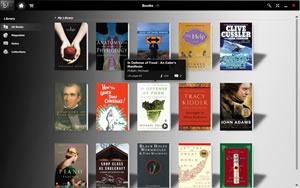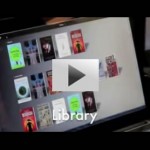
Despite all the buzz about Apple’s iPad tablet and how it could be useful for reading electronic textbooks, a new software program on the way might hold even more promise for education.
Blio, a free eReader program that is expected to be available in February, reportedly will allow users to read more than a million electronic books on nearly any computer or portable device, with the ability to highlight and annotate text, hear the text read aloud, and more.
Blio was announced at this year’s Consumer Electronics Show (CES) in Las Vegas and is the brainchild of education technology pioneer Ray Kurzweil, creator of Kurzweil Educational Systems and a range of assistive technology products.
Perhaps the software’s most impressive feature is that it can support the original layout, font, and graphics of any book in full color, its creators say. It also can support embedded multimedia such as video and audio, and readers have the ability to highlight, annotate, and share information.
Blio isn’t yet available, but already it’s backed by Baker & Taylor, one of the world’s largest publishers, as well as Elsevier, Hachette, HarperCollins, Random House, Penguin, Simon & Schuster, and Wiley. Blio users will have access to more than 1 million books altogether, its makers say—including a large selection of current bestselling titles.
Lisa Galloni, partner relationship manager for Blio, said the software has had tremendous support from publishers because it can preserve any book’s original layout and graphics.
Its flexibility is appealing as well, Galloni said.
“Because it’s not attached to any one device like a Kindle, it’s not restrictive,” she said.
As a user downloads eBooks, these are permanently stored in a personal virtual library, Galloni said. The entire library seamlessly migrates to up to five devices per user, any of which can be mobile.
“What’s great about it is that since all these devices are synched, you can read seamlessly,” she said. “Say I am reading a textbook on page 23, and then I leave my computer and decide to read on the bus via my iPhone. When I click on that book, it will still be on page 23.”
Because all texts are stored virtually, all of the user’s highlights and annotations are saved as well.
Users also reportedly can:
- Create a personalized list of reference web sites, for one-touch lookup of highlighted phrases;
- Adjust reading speed and font size;
- Translate to or from English in an embedded translation window; and
- Insert text, drawings, audio, images, or video notes directly into the content. These are saved and can be exported to create lists or study materials.
Another feature that could prove useful for assistive and language learning is Blio’s read-aloud function. A synthesized voice can read texts aloud using text-to-speech functionality, synchronized with follow-along word highlighting, so a user can look and listen at the same time.
Amazon.com’s popular Kindle eReader also includes text-to-speech capability, but in a concession to publishers, Amazon requires users to turn on this functionality themselves. Turning on this feature of the Kindle currently requires users to navigate through screens of text menus, which is a problem for users who are visually impaired.
Last June, the National Federation of the Blind and the American Council of the Blind joined a blind Arizona State University student in suing the school for its use of the Kindle in a pilot project, alleging that the device’s inaccessibility to blind students constituted a violation of federal law. The parties settled the lawsuit in January, in part because Amazon said it was working on making its Kindle eReader more accessible for the visually impaired.
Other features of Blio reportedly include the ability to open a book in 3-D “book view” for realistic page-turning, a “text-only” mode for optimal page display on small screens, the ability to display dual pages or tile multiple pages, the ability to enlarge text without distortion, and a high-resolution display.
Blio’s makers say the software will allow users to read eBooks on computers and mobile devices running Windows, Macintosh, Linux, Android, Symbian, Windows Mobile, and the iPhone operating system. Supported eBook formats include XPS, PDF, and ePub.
Downloading the software will require a computer running Windows 7, Vista, or XP, Windows Media Player 10 or higher, and at least a gigabyte of system memory. Galloni said a version of the software for Mac users will be available later this spring.
A full list of system requirements can be found here.
eSN.TV: See how Blio works
How it compares
A key advantage of Blio is that it doesn’t tie users to a single proprietary eReading device like the Kindle or any of its competitors. That means schools can use whatever computers or mobile devices they or their students already have to make electronic textbooks available to learners.
Blio also might be a more attractive option than other computer-based eReading software, such as the Amazon Kindle for PC or Stanza Desktop.
Though both the Kindle for PC and Stanza are free, Blio reportedly offers thousands more books than either of these platforms, and it is touch-capable, works with Windows 7, and has read-aloud and translation capabilities—all features lacking in these other programs.
A chart comparing Blio’s features with those of other eReader devices and programs can be found here.
Besides offering multiple study tools that will allow students to interact with their textbooks, Blio includes a library model that will enable students to borrow or rent certain electronic texts for a month or a semester at a time, Galloni said.
“I’ve looked at Blio, specifically in regard to foreign language instruction, and I am really impressed,” said Ryan Layman, an assistant professor in the English Language Program at Kanazawa Institute of Technology in Japan.
“Extensive reading has been widely touted in our field as a means for learners to build their language abilities, and Blio makes [texts] even more accessible to them. Its multimedia features, the vast amount of content, and the fact that it—and much of that content—is free provides … learners with a multi-functional learning tool at no to minimum cost.”
While Blio appears promising for schools, Layman said, it also holds promise for independent learners.
For example, the software’s read-aloud function “can be used to check pronunciation of unfamiliar words as well as for listening practice, and multimedia features allow for deeper comprehension of the material. Study tools such as sticky notes, highlighting, and bookmarks provide more functions for learners to engage in student-centered learning.”
The Blio “looks incredible and feature-rich; however, without the context of a device, it is hard to compare,” said Anthony David Adams, founder and editor of DetentionSlip, an education blog. “For example, I love my Kindle 2 because it is simple, easy on the eyes, and reads like a book. On a PC, however, this looks to be a superior product for reading books.”
Links:
For more news on recent developments in eReader technology, see:
Educators intrigued by Apple’s iPad
Can Apple’s tablet spark a textbook revolution?
eReader boom kindles variety of new options
New electronic devices could interest schools
- #4: 25 education trends for 2018 - December 26, 2018
- Video of the Week: Dealing with digital distraction in the classroom - February 23, 2018
- Secrets from the library lines: 5 ways schools can boost digital engagement - January 2, 2018



Comments are closed.